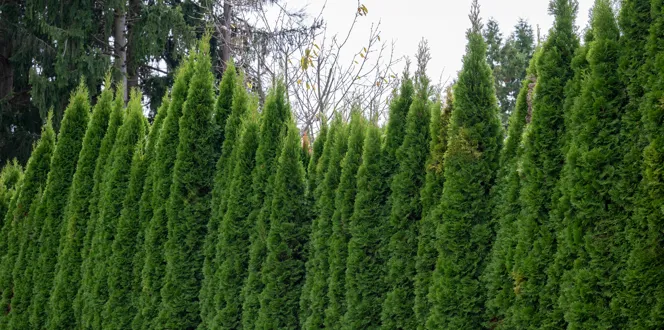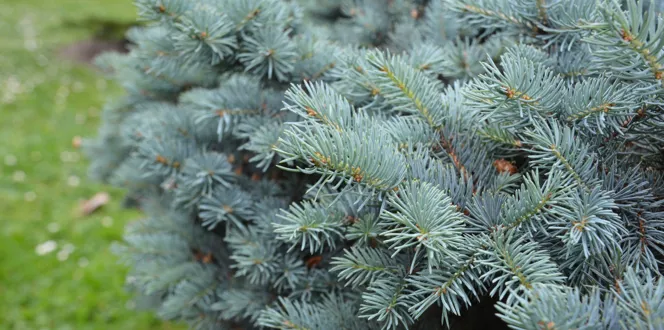The American elm tree is a majestic site with its grand vase-shape.
This large tree is native to eastern and central areas of the U.S., reaching 40 to 80 feet tall with a 60-foot spread.
Unfortunately, however, the American elm is becoming an increasingly rare sight in this country due to Dutch elm disease.
There may be nothing worse than watching a pathogen slowly kill tree after tree lining a residential street.
Let’s learn more about this elm tree disease, how fast Dutch elm disease can kill a tree, and how to dispose of a tree with Dutch elm disease. We’ll also answer the question, “Do all elm trees get Dutch elm disease?” so you can better understand which types of elms might be better suited to your home landscape.
How To Identify Elm Tree Disease
Dutch elm disease is an invasive fungal pathogen that is spread through grafted root systems to adjacent healthy elms, as well as by elm bark beetles that feed on elm trees.
While you may know how to identify an elm tree, you may not know whether or not elm tree disease is plaguing your beloved tree.
Look for these Dutch elm disease symptoms if you think your tree could be infected:
- Leaves on one or more branches of the tree’s outer crown are turning yellow, and then wilting and turning brown. This will continue down the infected branch toward the tree’s trunk.
- You’re finding fallen leaves on your lawn in summer.
- Symptoms usually appear in late spring or early summer.
Do all trees get Dutch elm disease? Not necessarily. While elms that are native to America and European elms are quite susceptible to the disease, Asiatic elms are actually resistant.
What Does A Dying Elm Tree Look Like
What does elm disease look like? A dying elm may have missing leaves and branches that are hanging. Dead elm tree bark won’t be brown. In fact, it might be cracking or splitting from the tree and appear more gray in color.
You’re probably wondering, “How fast can Dutch elm disease kill a tree?”
Since the Dutch elm disease fungus clogs an elm tree’s water conducting system, causing wilting leaves and eventual tree death, your elm tree usually doesn’t have very long to live once infected by this disease. Depending on the time of infection (spring or fall), diseased trees may survive for as little as one year or up to two years.
Can Dutch Elm Disease Spread To Other Trees?
The elm's intertwining root systems which graft one tree to its closest neighbors allow elm tree disease to spread very quickly from one infected tree out to others in the system.
Bark beetles can also spread the disease. They carry spores from one tree to another as they feed on inner bark and sapwood, which is where the sticky disease spores reside. These beetles are attracted to fresh pruning cuts, which is why elms are not typically recommended to be pruned during the growing season.
How To Dispose Of A Tree With Dutch Elm Disease
An infected and dying/dead elm tree must be cut down and disposed of properly. Any wood pruned from an infected elm must also be destroyed.
Remove and destroy Dutch elm-diseased trees since they can still draw beetles that can further spread disease spores. Do this by chipping, , or burying these trees to prevent disease transfer. Be mindful of allowing chips to cure for 8-9 months before re-use in mulch.
How To Manage Dutch Elm Disease
Once your tree has Dutch elm disease, acting quickly is important.
Unfortunately, once a tree has been diagnosed with Dutch elm disease, it should be removed as soon as possible.
If possible, also sever root grafts from an infected tree to adjacent healthy elms with a vibratory plow before removing the infected tree to prevent disease spread. A specialist will have to provide this service.
Preventive fungicide injections can protect healthy elm trees from beetle sources, but it doesn’t help prevent disease spread through root grafts. These treatments can only be done by trained, ISA-certified arborists.
How To Protect Elm Trees From Dutch Elm Disease
Keep your elm trees healthy with routine maintenance, including proper fertilization and pruning by a trained and ISA-certified arborist. Regular professional eyes on your tree can also catch problems early enough to remove your tree and prevent further disease spread.
To avoid spreading Dutch elm disease, sterilize all equipment before pruning each elm tree. Do not prune elms during the growing season. Susceptible elms should be injected with a preventative fungicide.
And to limit the potential for Dutch elm disease, choose Dutch elm disease-resistant varieties when planting or replacing removed trees.







